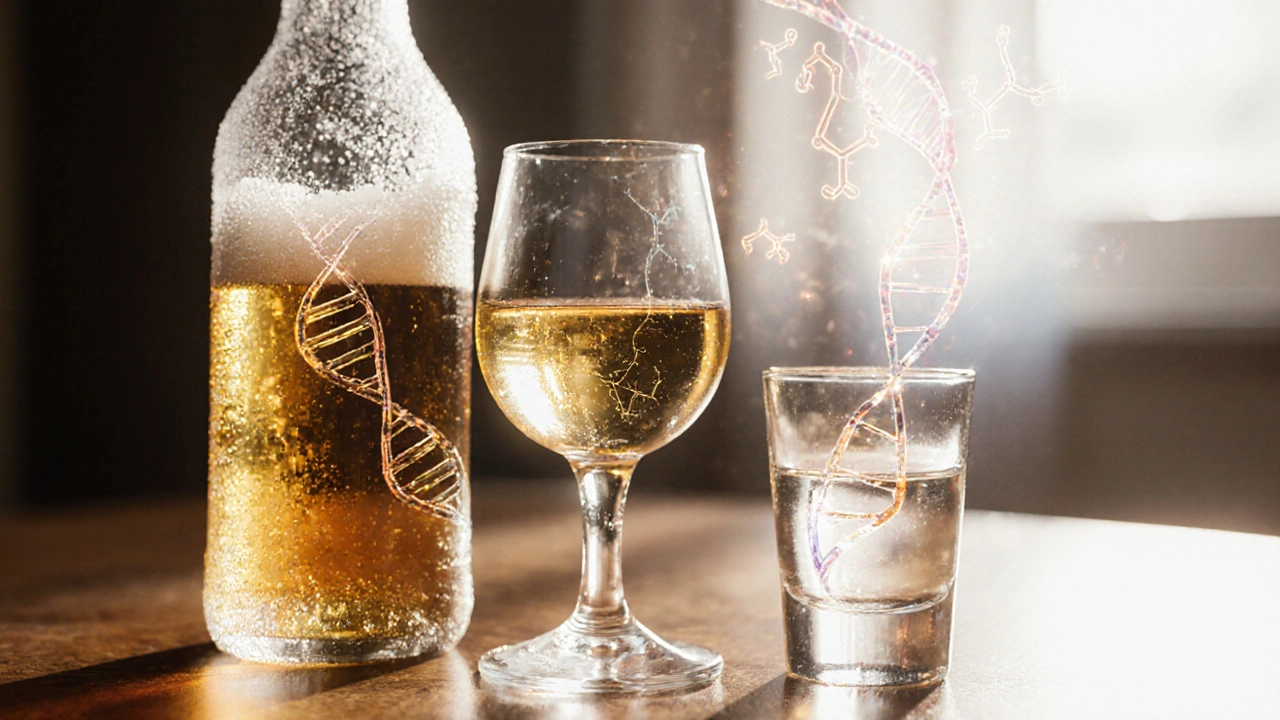Alcohol Cancer Risk
When you hear the term Alcohol cancer risk, the probability that drinking alcohol contributes to cancer. Also known as alcohol‑related cancer risk, it connects everyday drinking habits with long‑term health outcomes. A key player in this connection is Carcinogen, any substance that can cause cancer, and alcohol itself acts as one. The risk shows up most clearly in Liver cancer, a malignant tumor that originates in liver cells and Breast cancer, a disease where breast cells grow uncontrollably. Understanding these links helps you see why drinking patterns matter for cancer prevention.
How Alcohol Turns Into a Cancer‑Boosting Agent
Alcohol is metabolized into acetaldehyde, a toxic alcohol cancer risk driver that damages DNA and interferes with repair mechanisms. The more you drink, the higher the acetaldehyde exposure, creating a classic dose‑response curve: light drinkers see a modest rise, while heavy drinkers face a steep climb in cancer odds. This process doesn’t happen in isolation—nutrition, genetics, and smoking can amplify the effect. For example, people with certain ALDH2 gene variants clear acetaldehyde slower, so their personal risk spikes even at lower intake levels. Moreover, alcohol can raise estrogen levels, which partly explains its link to breast cancer. The combined impact of acetaldehyde, hormone shifts, and oxidative stress forms a web that fuels tumor growth in multiple organs.
Knowing the mechanisms lets you take action. Public health guidelines usually recommend no more than one drink a day for women and two for men; staying under these limits cuts the acetaldehyde burden dramatically. If you already enjoy a drink, pairing it with food slows absorption, reducing peak toxin levels. Some studies point to antioxidant‑rich diets—like berries, leafy greens, and nuts—as protective buffers against alcohol‑induced DNA damage. Finally, regular screening for liver and breast health becomes crucial for anyone who drinks regularly, because early detection can offset the elevated risk.
Below you’ll find a curated set of articles that break down the science, compare treatment options, and offer practical tips for managing alcohol‑related cancer risk. Whether you’re looking for the latest research, lifestyle changes, or medication guidance, the collection equips you with the info you need to make smarter health choices.

How Alcohol Consumption Raises Carcinoma Risk: What the Science Says
Explore how alcohol consumption contributes to carcinoma risk, the science behind it, which cancers are most affected, and practical steps to lower your chances.